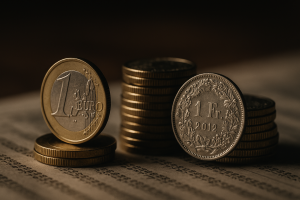If you’re new to crypto (or trading in general), chances are you’ve seen terms like “bullish” or “bearish” all over your feed, but what do they actually mean?
And more importantly…
How can you use them to make smarter trading decisions?
Understanding market direction is one of the most important foundational skills every trader needs to master, and it’s simpler than you think. In this post, we’ll break it down in plain English and show you how to identify whether we’re in a bull run, bear market, or just a short-term pullback.
Let’s get into it 👇
🔍 What Does “Bullish” Mean?
A bullish market is when prices are going up, or expected to go up.
In crypto, this typically looks like:
- Bitcoin breaking out of major resistance levels
- Altcoins pumping 50%+ in a few days
- Strong volume and market-wide excitement
- More buyers than sellers
- News headlines filled with optimism
A trader who is “bullish” believes that a coin or token will increase in value and will typically look for long setups (buy low → sell high).
🧨 What Does “Bearish” Mean?
A bearish market is when prices are falling, or expected to fall.
It’s marked by:
- Bitcoin or Ethereum breaking support zones
- Altcoins dumping rapidly
- Fear in the market (look at the Fear & Greed Index!)
- More sellers than buyers
- Negative news or regulatory uncertainty
A “bearish” trader is expecting price to drop, and they might look for short setups (sell high → buy back lower) or choose to sit out until conditions improve.
📈 Examples of Bullish Behavior in Crypto
- Bitcoin flipping resistance into support at key levels (e.g. $60K)
- Ethereum forming higher highs and higher lows on the 4H and Daily charts
- Solana or Avalanche showing breakouts with increasing volume
- News of institutional adoption or ETF approval
- Crypto market cap increasing and BTC Dominance decreasing (great for altcoin rallies)
📉 Examples of Bearish Behavior in Crypto
- Bitcoin losing major support levels and falling 10%+ in a day
- Altcoins retracing back to bear market prices from 2022–2023
- Declining 24H trading volume
- Negative macro events like war, high inflation, or SEC lawsuits
- BTC Dominance going up while TOTAL3 falls (signaling altcoin bleed)
📊 Key Tools to Spot Bullish vs. Bearish Conditions
To figure out if the market is bullish or bearish, here are 3 simple tools you can start using today:
- Market Structure (Higher Highs vs. Lower Lows)
- Bullish = higher highs, higher lows
- Bearish = lower highs, lower lows
- Volume
- Bullish = increasing volume during up moves
- Bearish = increasing volume during sell-offs or low volume on recoveries
- Macro Dashboards
- Use dashboards to track fear & greed, funding rates, and volume trends
You don’t need a PhD in charting, just watch for the shifts in momentum and how money is flowing in or out.
🧠 Bonus Tip: You Don’t Need to Be Bullish or Bearish 100% of the Time
One of the biggest mistakes beginners make is thinking they always need to “pick a side.”
But the best traders learn how to be flexible.
Sometimes the smartest move is not to trade at all, especially when the market is choppy or indecisive. Wait for confirmation, not gut feelings.
📚 Want to Learn How to Read the Market Like a Pro?
If you want to stop guessing and start trading with confidence, the EPIQ Trading Floor has everything you need:
✅ Trading Academy with free beginner lessons
✅ Smart Money & Volume tools that show you where the market’s headed
✅ Live macro dashboards (volume, fear & greed, global trends)
✅ 24/7 trading signals & community support
✅ A full-featured social media platform for traders
You’ll never trade alone again.
🎯 Start now at epiqtradingfloor.com
📌 Final Thoughts
Understanding bullish vs. bearish isn’t just trading lingo, it’s a crucial part of reading market sentiment and improving your timing.
Know the trend, respect the trend… and trade it with discipline.










Responses